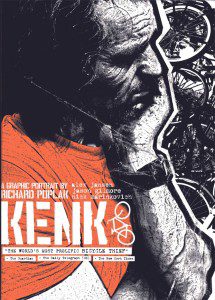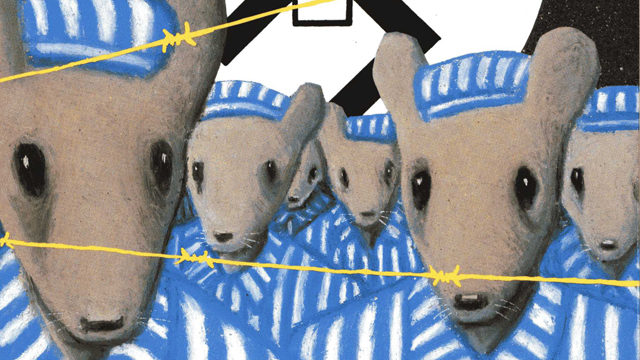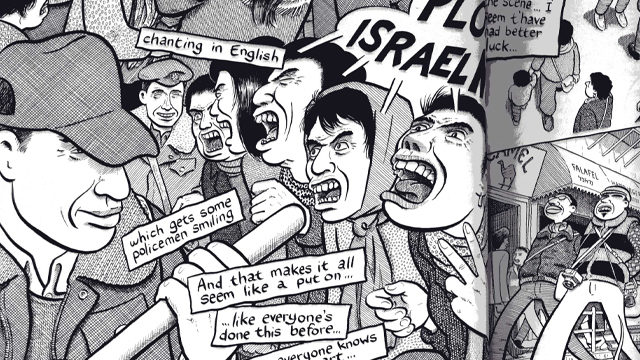Graphic Reporting
There's more to graphic novels than superheroes and villains
The Silver Snail comic shop on Toronto’s bustling Queen Street West is jam-packed with thick graphic novels, skinny superhero comics, and countless action figures. Wooden bookshelves line every wall and from ceiling to floor, colourful book spines fight for your eye’s attention. Scattered among the superheroes, monsters, villains, and fantasy creatures are a few non-fiction graphic novels—visual, visceral works about people and places around the world.
From Joe Sacco’s stories of the Gaza strip to Guy Delisle’s portrait of North Korea to Chester Brown’s escapades in the sex industry, each tells an important story through a visual medium. Jeffrey Brown, an American autobiographical cartoonist, describes comics journalism as something “along the lines of what someone like Hunter S. Thompson did, taking journalism and twisting into something more or different.”
Chester Brown, a Canadian graphic novelist, puts it this way: “Comics give you that sort of sense of immediacy with the visual images that you can’t get in prose.” In comics, the pictures are the “base story,” and words simply clarify an image.
An image can also act as a lens for readers. “For traumatic events, a photograph representation can hurt and scar the mind,” says Joanne Hui, an illustrator working on a travel memoir about the 2010 Shanghai World Exposition. “Whereas, the drawn image in journalism acts through the filter of a fellow human being, a direct but mediated interpretation of an event.”
Though non-fiction graphic novels can cover many topics, they are not exactly well understood. As Richard Poplak, a South African-Canadian journalist and author of 2010’s Kenk: A Graphic Portrait, says in an email, “You’d be shocked at how many people have no real concept of what a graphic novel is, and don’t actually understand the medium, or the language.”
Perhaps part of the confusion arises from the fact that comics are thought of as kids’ stuff. But more often than not, the subject matter in graphic novels is “pretty touchy,” according to George Zotti, owner of Silver Snail. One of the most famous examples is Art Spiegelman’s Maus, the Holocaust tale told using cats and mice that won a special Pulitzer Prize 20 years ago. “Maus took a softer tone because it turned all the characters into anthropomorphic animals to take the edge off; then you’re seeing mice die as opposed to people die,” Zotti says. But not soft enough for the average 10-year-old.
Authors choose visuals over words for different reasons. For some, like David Collier, a social and political cartoonist, the importance of a story is often the reason he chooses to spend time illustrating it. “If you start a picture and you know it’s going to take a lot of time,” Collier says, “you know it’s going to be a long haul, it has to be something that you like.”
Topics that writers like are often ones they know best. Chester Brown, who reads a lot of history books, wrote a biographical graphic novel on Louis Riel. But he is also a self-professed “john,” and his most recent book, Paying for It, explores that aspect of himself. “Write about what you know about. It seems natural,” says Chester Brown. “If you see a situation in society and you want to change people’s minds about it, you explain how things look from your perspective.”
For others, drawing more truthfully conveys the author’s perspective. Hui finds that her “scratches of incomplete thoughts” when watching scenes, places, and people end up being a more honest depiction than if she were to use plain words. “Drawing is a form of bearing witness to an event that evades the trappings that words can sometimes have for particularly spectacular or traumatic world events,” Hui says.
Complicated events and stories can be less dense, and therefore often more accessible when they appear in the visual form of a graphic novel. This is especially true for younger readers, who, when choosing a graphic novel, may be “reading about subjects and stories with complex subject matter that is over what their reading level would otherwise suggest,” says Peter Birkemoe, owner of The Beguiling comic book shop in Toronto. “So, you’ll get high school students reading Joe Sacco’s Palestine, but it’s not like they’re going to be reading Edward Said or another writer from the Middle East.”
“The more mediums you have disseminating a message, the wider potential audience you have for that message to reach,” Jeffrey Brown wrote in an email. “Comics would generally expose these subjects to a wider audience. For example, Marjiane Satrapi’s Persepolis probably introduced a lot of people—both comics readers specifically and among the wider population in North America—to the politics and contemporary history of Iran.”
The downside? “You can’t cover as much territory in the same number of pages as you can in prose,” says Chester Brown.
Sales can also be modest. Poplak’s portrait of Igor Kenk, the prolific Toronto bike thief, “found a very niche audience, and perhaps brought a few neophytes into the fold.”
However, Zotti says most people who walk into a comic book shop are open to pretty much anything. “If you’re coming into a comic store, you usually have a reasonably liberal mind,” he says. “So even if you’re into reading superhero books, you still have a usually pretty liberal idea and you’re interested in what’s going on in the world and also locally.”
For Zotti, the central appeal of comics journalism is simple: “It’s just about human nature, the human condition.”


















